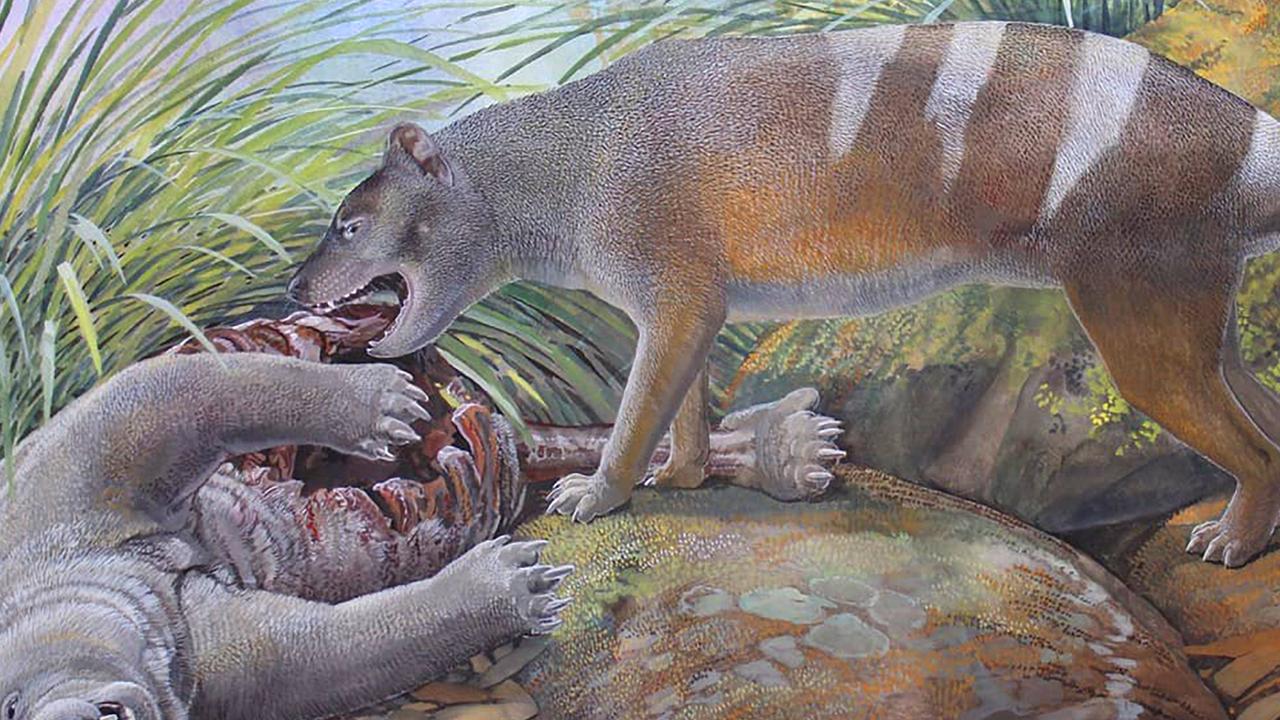UNSW scientists discover three new species of thylacine in fossils unearthed in Queensland
Significant new research reveals the discovery of three new species of thylacine, including one with close links to what we now know as the Tasmanian tiger.

Scientists have unearthed fossils of three new species of thylacine, helping to build a greater understanding of the ill-fated Tasmanian tiger’s complex lineage.
Eighty-eight years after the last known thylacine died in captivity at Hobart’s Beaumaris Zoo, new research has been published in the Journal of Vertebrate Paleontology detailing the discovery of Badjcinus timfaulkneri, Nimbacinus peterbridgei, and Ngamalacinus nigelmarveni.
Evidence of the three species – named after Australian Reptile Park co-owner Tim Faulkner, renowned geologist Peter Bridge, and British TV presenter Nigel Marven, respectively – was uncovered in the Riversleigh World Heritage Area in Waanyi country of north-western Queensland.

Palaeontologists from the University of New South Wales (UNSW) say the species are now the oldest members of the thylacine family and are estimated to be 23-25 million years old, dating them to the late Oligocene epoch.
Badjcinus timfaulkneri is the largest of the three new species and is believed to have weighed between seven and 11kg.
Lead author of the research, Tim Churchill, a UNSW PhD student, said the large thylacine provided remarkable new insights into the ancestry of the Tasmanian tiger.
“Up until now, the much smaller Badjcinus turnbulli, which weighed around 2.7kg, was the only other late Oligocene thylacinid known,” HE SAID.
“The teeth – including the lower jaw and isolated first molar – were found at Hiatus Site at Riversleigh, which is even older than White Hunter Site where Badjcinus turnbulli was previously found.
“This makes Badjcinus timfaulkneri the oldest undoubted thylacine discovered so far.”
As for Nimbacinus peterbridgei, it was said to be slightly larger than a tiger quoll at about 3.7kg and was “probably” the oldest direct ancestor of the Tasmanian tiger “yet known”, according to co-author Professor Mike Archer.

He said it was “a more generalised predator that probably focused on small mammals and other prey species” living in the ancient forests of Riversleigh.
“We think it may have been on the direct line to the only other species of Nimbacinus, the larger Nimbacinus dicksoni … that was found in 15-million-year-old deposits at Riversleigh. This group of thylacines appears to be the one that led directly to the species of Thylacinus,” Professor Archer said.
The Ngamalacinus nigelmarveni, meanwhile, weighed about 5.1kg and was around the size of a red fox, another of the study’s co-authors, Sue Hand, said.
Mr Churchill said the presence of three distinct lineages of “specialised thylacinids” in the late Oligocene period demonstrated how rapidly the group of marsupials flourished after first showing up in the fossil record.
“All but one of these lineages – the one that led to the modern thylacine – became extinct by 8 million years ago. That lineage ended with the death of Benjamin, the last Tasmanian tiger in Hobart’s Beaumaris Zoo on September 7, 1936,” he said.





